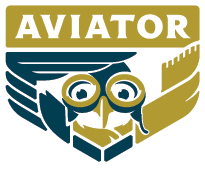Teaching Parrots to Bite
Letting strangers approach your young birds’ cage can teach him to bite!
The last thing a wild parrot wants to do is bite. In all but a few cases their natural instinct is to fly and avoid any possibility of danger. When it comes to ‘Fight or Flight’ a parrot will almost always choose Flight.
So what are we doing to teach so many pet parrots to bite first and ask later?
I can think of several ways almost every breeder, pet store and pet bird owner accidently teach their birds to bite first and fly (flight) later by the time they are 1 year old. In this series we will explore several ways we teach our pet to bite. Today I would like to discuss the psychological necessity of ‘retreat and approach’.
We have all heard about the ‘retreat and approach’ concept but since humans are predators and less susceptible to fear the topic is not commonly discussed. When you are a bird and on everybody’s lunch menu this basic need to quickly and safely retreat is very important.
A simple human example happens when a stranger approaches a young child and the child moves behind mom’s leg for a few moments while the child decides if this is person is a threat. Momentary retreating builds confidence because the child feels in control and safe while they quickly assess the situation and decide if this stranger is OK. In a case where the child would like to retreat but cannot the immediate reaction is a bit of fear. Fears main purpose is to instantly alert an individual to situations where we are less confident so we can quickly defend ourselves. Fear is the strongest emotion and even seemingly insignificant repeated fearful experiences can have a profound effect on our adult personalities.
DON’T BE FOOLED. Young birds are programed to act friendly like they want attention. A bird trapped in a cage can still act like a cuddly baby most of the time. In most cases it will be only a small percentage of the time when a bird will be scared and need to retreat for a fraction of a second, not the other 99% of the time.
These short psychological retreats are significant builders of adult personalities. If a developing mind finds itself unable to retreat and approach too often they eventually respond to life with a slightly defensive attitude and are more likely to become less confident and aggressive. The more times an individual finds themselves slightly fearful the more their personality is slowly shaped to be defensive and choose to bite because life experience has shown the Flight is not an option.
Pet birds in a cage are not able to enjoy the option to retreat. Under normal household circumstances this is usually not a problem because the bird becomes used to everything that goes on around his cage so he will not have as strong a need to retreat to feel safe. Young animal minds are constantly being surprised by new events. A strange sound, a new object coming into sight, or just a feeling that he needs to have the option to retreat and think things through will happen many times a day. Strangers approaching your bird’s ‘bed room’ (cage) is much more significant than an uninvited person walking into your house.
One by one these events may not sound significant but when it is your bird’s entire life’s experience it can change the way he processes information on a very basic level.
Solution: Treat your bird’s personal space as if it were your bedroom. Do not let strangers approach your birds’ cage without your close supervision. Birds in a cage cannot Retreat and Approach.
Rule: Personality is 55% genetics, 10% nature, and 35% parenting.
Next Chapter: Teach your bird not to trust strangers.
You Can’t See Me
Young birds, and many adults, think they can hide behind any object that they cannot see around. This bird is hiding behind the corner bar of the cage.
Personal Space Inside a Large Cage
Multiple birds housed in one cage will develop an arrangement for personal and shared space just like humans do. Large Outdoor Flights are Private Personal SpaceExtended FamilyAll the occupant of a home usually developed a tolerance for each other invading our personal space, at least for a few minutes.



